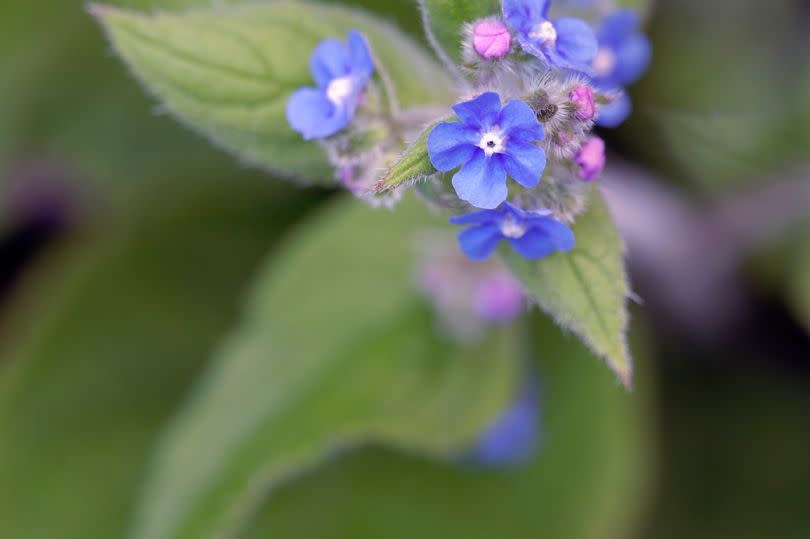Five common garden plants that could be damaging your house and health
With warmer weather approaching many people like to enjoy time in their gardens. Whether you are working to make them beautiful or simply enjoying time sitting outside time spent outdoors can be a big boost to health.
But a garden expert is warning if you have the wrong plants in your garden it can have the opposite effect - both on your health and your wallet. For some invasive species not only grow quickly but they can wreck your home - and spread into neighbouring properties which could leave homeowners facing hefty bills.
And if you get them on your skin some can cause irritation, burns and blisters among other problems. They can even in some cases cause blindness if the plant comes into contact with eyes.
London rubbish removal firm Rainbow Rubbish Removals has identified five of the biggest offending plants and six more to watch for. Here's their five biggest offenders, what harm they can do and how to get rid of them:
Giant Hogweed (Heracleum mantegazzianum)
Giant hogweed, the most dangerous invasive species in the UK, can grow taller than 10 feet. While it may look pretty, it’s advised to remove the plant as soon as you see it, as this plant poses a significant risk to individuals unaware of its harmful effects.
Negative/Dangerous Traits
Exposure to the sap can result in skin burns
Contact with the plant can induce rashes and blisters on human skin
There is a risk of potential blindness if the plant comes into contact with the eyes
It exhibits invasive behaviour, spreading rapidly
How to remove
To control giant hogweed in your garden focus on preventing seed formation to stop its spread. Removing the plant entirely is the most effective method. Always wear protective gear when handling the plant, and cut it just below the growing point underground. If needed, apply herbicide at the start of the growing season in May.
Japanese Knotweed (Fallopia japonica)
Japanese knotweed is a fast-spreading weed. It dies back in winter but quickly regenerates in early summer, shooting up bamboo-like stems over 7 feet tall, suppressing other plant growth in your gardens.

Negative/Dangerous Traits
Impairs the growth of surrounding plants
Roots penetrate pavements and house foundations
Can reduce the value of a house by up to 20%
How to remove
Seeking professional assistance is advisable for the removal of this invasive plant, but should you try to tackle it yourself, Rainbow Rubbish Removals suggests spraying or injecting the stems with approved herbicides. Repeated applications may be necessary, and typically, it requires a minimum of three years to effectively treat the knotweed.
Poison Hemlock (Conium maculatum)
Poison hemlock is a highly toxic plant with smooth, purple-spotted stems and finely divided, fern-like leaves. It typically grows up to 6-10 feet in height. Its small, white umbrella-shaped flowers appear in clusters during the summer. This plant is infamous for its deadly poison, affecting the nervous system and often proving fatal if ingested.

Negative/Dangerous Traits
Highly toxic to humans and animals if ingested
Can cause respiratory failure, paralysis, and death in severe cases
Often mistaken for edible plants like parsley or wild carrots, leading to accidental poisoning
How to remove
It's vital to always wear protective clothing when handling the plant. Dig out the whole plant, including the long taproot, (alternatively, glyphosate treatment can be used to eradicate the plant). Wash your hands thoroughly after bagging up the plant for removal. Continue to monitor the area for seedling growth.
Chinese Wisteria (Wisteria sinensis)
This is a climbing vine known for its beautiful cascades of fragrant purple flowers. However, its rapid growth and ability to smother other plants make it a nuisance in gardens, do not be fooled by this beautiful species.

Negative/Dangerous Traits
It has an aggressive growth habit, which can overtake landscapes rapidly
It has an ability to strangle and kill trees and shrubs
Chinese wisteria has toxic seeds and pods, which are harmful to humans and animals if ingested
It can cause structural damage by growing into buildings and infrastructure, de-valuing your home
How to remove
To remove invasive wisteria safely, cut the vines close to the root and apply glyphosate or garlon to the cut stem. Dispose of cut vines properly. Alternatively, if avoiding herbicides, trim regularly until autumn or dig up the entire plant, watching for regrowth.
Green Alkanet (Pentaglottis sempervirens)
An invasive perennial with clusters of small blue flowers and rough, hairy leaves. Despite its attractive appearance, Green Alkanet can quickly spread and dominate garden beds, crowding out desirable plants.

Negative/Dangerous Traits
It spreads extremely quickly
It can smother and kill other plants in your garden
It's hard to eradicate because its seeds remain in the soil for a long time
The hairy stems can cause skin irritation
How to remove
To remove green alkanet, pull or fork out seedlings from loose soil, ensuring you remove all roots. Keep an eye out for new seedlings near existing clumps. For established plants, dig out clumps with a border fork or spade, targeting the root system. Smothering plants with cardboard and thick organic matter or using biodegradable mulch matting can also be effective. Keep the soil covered for several years to make sure it doesn’t spread again.
Other invasive species to watch for and prepare to remove
Rhododendron
Norway Maple Tree
Himalayan Balsam
English Ivy
Bugleweed
Russian Vine

 Yahoo News
Yahoo News 
